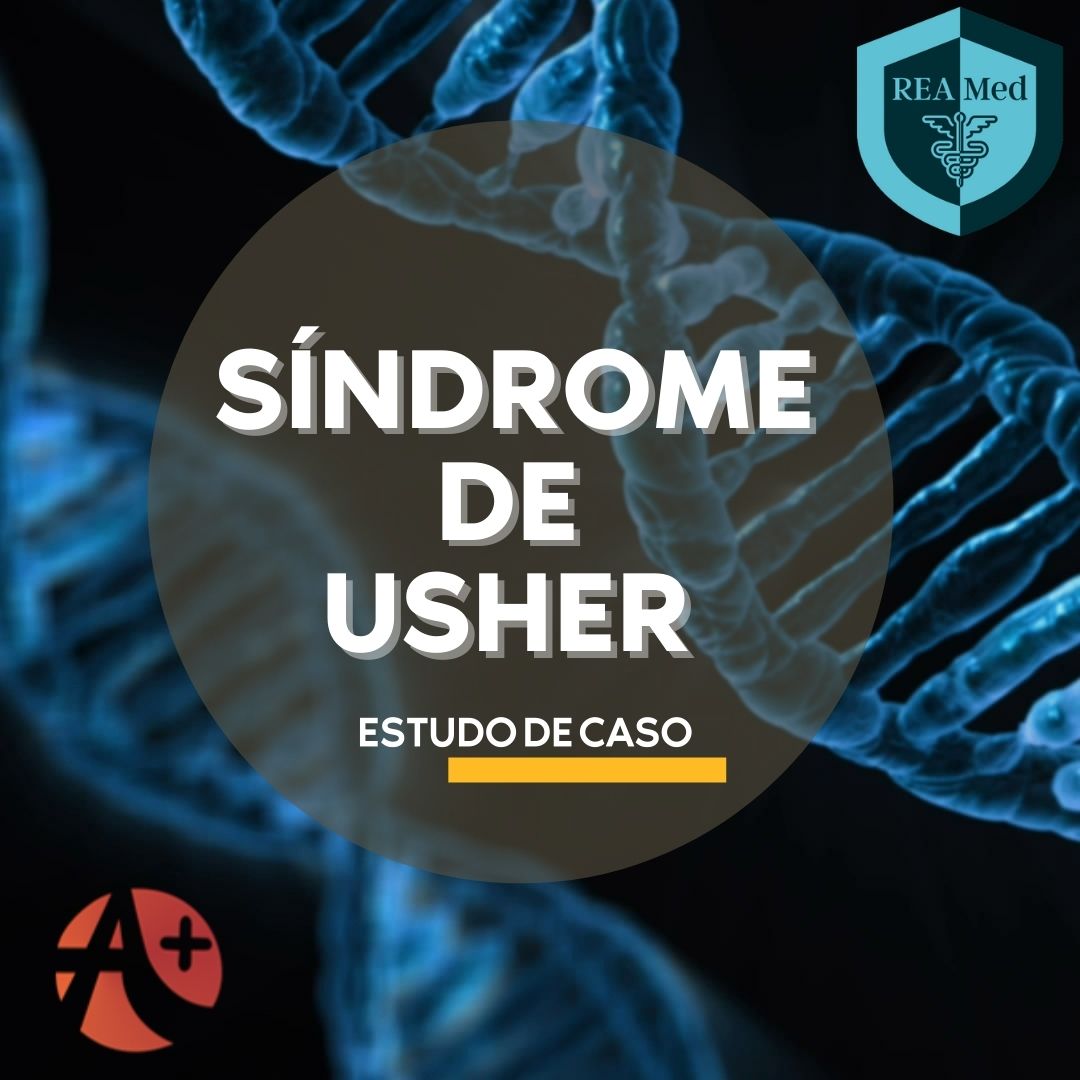Síndrome de Usher tipo 2 surdez congênita e visão subnormal no adulto: relato de caso
##plugins.themes.bootstrap3.article.main##
Resumo
Objetivo: Descrever o diagnóstico tardio de um caso de Síndrome de Usher (SU), analisar as manifestações clínicas e classificar a doença utilizando os achados oftalmológicos além de compará-los à literatura atual. Detalhamento do caso: G.A.S mulher de 32 anos, veio à consulta queixando-se de baixa Acuidade Visual (AV) com piora da visão noturna. Apresentava LUPUS, hipertensão arterial sistêmica dislipidemia, hipoacusia neurossensorial em uso de aparelho, cirurgias oculares prévias, faco+lio em 2009 e 2016. Ao exame AV 20/50 no Olho Direito (OD) e 20/60 no Olho Esquerdo (OE) com lentes corretivas, tonometria 10 mmhg OD e 13 mmhg OE, biomicroscopia sem alteração em Ambos os Olhos (AO). À campimetria apresentou, perda de Campo Visual (CV) periférico em AO. À fundoscopia demonstrou discos ópticos pálidos, estreitamento vascular e espículas ósseas em AO. Considerações finais: A SU se caracteriza pela associação de Retinose Pigmentar (RP) e surdez congênita, parcial ou total. É uma doença autossômica, herdada recessivamente. Os achados clínicos juntamente com os exames complementares apoiaram para o diagnóstico de RP e SU subtipo 2. O diagnóstico precoce possibilitaria intervenções que modificariam o curso da doença e assim, reduzir os agravos futuros à saúde da paciente.
##plugins.themes.bootstrap3.article.details##
Copyright © | Todos os direitos reservados.
A revista detém os direitos autorais exclusivos de publicação deste artigo nos termos da lei 9610/98.
Reprodução parcial
É livre o uso de partes do texto, figuras e questionário do artigo, sendo obrigatória a citação dos autores e revista.
Reprodução total
É expressamente proibida, devendo ser autorizada pela revista.
Referências
2. BONNET C, El-AMRAOUI A. Usher syndrome (sensorineural deafness and retinitis pigmentosa): pathogenesis, molecular diagnosis and therapeutic approaches. Curr Opin Neurol., 2012; 25(1): 42-9.
3. BUCHAIM G, et al. Implante intravítreo de liberação crônica de dexametasona (Ozurdex ®) para o tratamento de edema macular por retinose pigmentar: relato de caso. Arq Bras Oftalmol., 2013; 76(6): 377-9.
4. DAD S, et al. Usher syndrome in Denmark: mutation spectrum and some clinical observations. Mol Genet Genomic Med, 2016; 4: 527–539.
5. DJILAS M, et al. Three-dimensional electrode arrays for retinal prostheses: modeling, geometry optimization and experimental validation. J Neural Eng., 2011; 8(4).
6. FISHMAN GA, et al. Usher’s syndrome. Ophthalmic and neuro-otologic findings suggesting genetic heterogeneity. Arch Ophthalmol, 1983; 101: 1367-74.
7. FRIEDMAN TB, et al. Usher Syndrome: Hearing Loss with Vision Loss. Adv Otorhinolaryngol, 2011; 70: 56-65.
8. GENEAD MA, FISHMAN GA. Efficacy of sustained topical dorzolamide therapy for cystic macular lesions in patients with retinitis pigmentosa and Usher syndrome. Arch Ophthalmol., 2010; 128(9): 1146-50.
9. HARTEL BP, et al. Cochlear implantation in patients with Usher syndrome type IIa increases performance and quality of life. Otol Neurotol, 2017; 38: e120–e127.
10. HARTONG DT, et al. Retinitis Pigmentosa. Lancet. 2006; 368(9549): 1795-809.
11. JOURET G, et al. Genetics os Usher Syndrome: New Insights From a Metaanalysis. Otol Neurotol., 2019; 40(1): 121-9.
12. LE QUESNE STABEJ P, et al. Comprehensive sequence analysis of nine Usher syndrome genes in the UK National Collaborative Usher Study. J Med Genet, 2012; 49: 27–36.
13. MAGLIULO G, et al. Usher’s syndrome type II: a comparative study of genetic mutations and vestibular system evaluation. Otolaryngol Head Neck Surg, 2017; 157: 853–860.
14. MARAZITA ML, et al. Genetic epidemiologic studies of early-onset deafness in the United States school-age population. Am J Med Genet, 1993; 46: 486–491.
15. MATHEUS RJ, et al. Ocular manifestations and conduct in Usher Syndrome. eOftalmo., 2021;7(1):25-30.
16. MENDIETA L, et al. Acuidade visual e eletrorretinografia de campo total em pacientes com síndrome de Usher. Arq Bras Oftalmol., 2005; 68(2):171-6.
17. MEYER JS, et al. Embryonic stem cell-derived neural progenitors incorporate into degenerating retina and enhance survival of host photoreceptors. Stem Cells., 2006; 24(2): 274-83.
18. MILLAN JM, et al. An update on the genetics of Usher syndrome. J Ophthalmol, 2011; 417217.
19. PIETOLA L, et al. Speech recognition and communication outcomes with cochlear implantation in Usher syndrome type 3. Otol Neurotol, 2012; 33: 38–41.
20. REINERS J, et al. Molecular basis of human Usher syndrome: deciphering the meshes of the Usher protein network provides insights into the pathomechanisms of the Usher disease. Exp Eye Res, 2006; 83: 97–119.
21. REISSER CF, et al. Hearing loss in Usher syndrome type II is nonprogressive. Ann Otol Rhinol Laryngol, 2002; 111: 1108–1111.
22. SADEGHI M, et al. Audiological findings in Usher syndrome types IIa and II (non-IIa). Int J Audiol, 2004; 43: 136–143.
23. SEILER MJ, ARAMANT RB. Transplantation of neuroblastic progenitor cells as a sheet preserves and restores retinal function. Semin Ophthalmol., 2005; 20(1): 31-42.
24. TOMS M, et al. Usher syndrome: clinical features, molecular genetics and advancing therapeutics. Ther Adv Ophthalmol, 2020; 12: 25-52.
25. USHER C. On the inheritance of retinis pigmentosa, with notes of cases. Royal London Ophtalmol Hosp Rep., 1914; 19: 130–236.
26. VON GRAFFE A. Vereizelle Beobachtungen und bemerkungen-Exceptionnelles verhaller des Gesichts feldes bei Pigmentenarter der Netzhalt. Arch Klin Ophtalmol. 1858; 4: 250–3.
27. WALIA S, et al: Prevalence of cystic macular lesions in patients with Usher II syndrome. Eye (Lond), 2009; 23: 1206–1209.
28. ZOU J, et al. Whirlin replacement restores the formation of the USH2 protein complex in whirlin knockout photoreceptors. Invest Ophthalmol Vis Sci., 2011; 52(5): 2343-51.
29. ZRENNER E, et al. Subretinal electronic chips allow blind patients to read letters and combine them to words. Proc Biol Sci., 2011; 278(1711): 1489-97.

